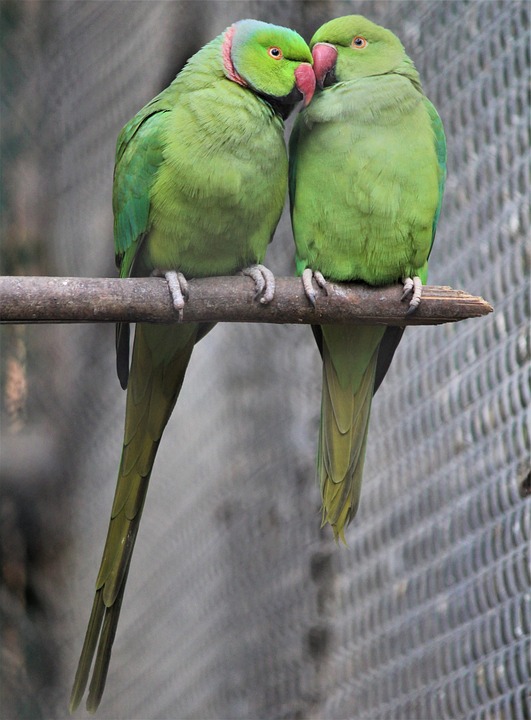Parrot training can be a rewarding experience for both the owner and the bird. However, it is not uncommon for parrots to become overexcited during training sessions, which can hinder progress and create challenges. This is where positive reinforcement techniques come into play, as they can effectively address overexcitement and promote calm and focused behaviors in parrots.
Understanding the Importance of Positive Reinforcement in Parrot Training
Positive reinforcement is a training technique that involves rewarding desired behaviors to encourage their repetition. This approach is crucial in parrot training because it focuses on rewarding good behavior rather than punishing bad behavior. By using positive reinforcement, parrots learn to associate certain actions with pleasant outcomes, which motivates them to perform those actions more frequently.
The benefits of using positive reinforcement techniques in parrot training are numerous. Firstly, it strengthens the bond between the owner and the bird, as it creates a positive and enjoyable training environment. Additionally, positive reinforcement helps to build trust and confidence in the parrot, making them more receptive to learning and cooperation. Lastly, positive reinforcement techniques are effective in addressing overexcitement during training sessions, providing a way to channel the parrot’s energy into more productive behaviors.
Identifying Overexcitement in Parrots during Training
Overexcitement in parrots during training sessions can be identified through various signs. These include excessive vocalization, flapping of wings, rapid movement, and difficulty maintaining focus. Overexcitement can have a negative impact on training progress, as it can lead to distractions, lack of focus, and difficulty in reinforcing desired behaviors.
To address overexcitement effectively, it is important to understand the underlying causes. Overexcitement can be a result of a high-energy parrot, lack of mental stimulation, or even fear or anxiety. By identifying the triggers for overexcitement, owners can tailor their training approach to promote calm and focused behaviors.
Implementing Positive Reinforcement Techniques
To address overexcitement during parrot training, it is essential to implement positive reinforcement techniques consistently. Here are some key strategies to consider:
1. Establishing a clear training plan: A well-defined training plan helps to create structure and consistency in training sessions, making it easier to reinforce desired behaviors and manage overexcitement.
2. Choosing the right rewards for positive reinforcement: Parrots have individual preferences when it comes to rewards. Experiment with different treats, toys, and praise to find what motivates your parrot the most.
3. Timing is everything: Reinforcing desired behaviors promptly is crucial. Parrots have short attention spans, so rewarding them immediately after they perform the desired behavior helps them make the connection between the behavior and the reward.
4. Using clicker training to reinforce positive behaviors: Clicker training is a popular method that involves using a clicker to mark the desired behavior, followed by a reward. This technique helps parrots understand exactly which behavior is being reinforced.
Addressing Overexcitement through Positive Reinforcement
To address overexcitement during training sessions, it is important to recognize the triggers that cause it. Common triggers can include loud noises, sudden movements, or specific objects. Once identified, gradual desensitization to these triggers can be implemented. This involves gradually exposing the parrot to the trigger in a controlled and positive manner, reinforcing calm and focused behaviors throughout the process.
Shaping calm and focused behaviors through positive reinforcement is another effective approach. By breaking down the desired behavior into smaller steps and reinforcing each step, parrots can learn to remain calm and focused during training sessions.
Reinforcing calmness during high-stimulation activities is also important. For example, when introducing new toys or engaging in interactive play, rewarding the parrot for maintaining a calm demeanor can help reduce overexcitement and encourage self-control.
FAQs: Common Questions about Addressing Overexcitement during Parrot Training
1. Can overexcitement be completely eliminated during parrot training?
While overexcitement can be managed through positive reinforcement, it may not be entirely eliminated. Parrots are naturally energetic creatures, and some level of excitement is to be expected. However, with consistent training and reinforcement, overexcitement can be significantly reduced.
2. Is punishment an effective way to address overexcitement in parrots?
Punishment is not recommended as a way to address overexcitement in parrots. It can create fear and anxiety, which can worsen the problem and damage the trust between the owner and the bird.
3. How long does it take to see results when addressing overexcitement using positive reinforcement?
The time frame for seeing results when addressing overexcitement can vary depending on the individual parrot and the consistency of the training. Some parrots may show improvements within a few weeks, while others may require more time. Patience and persistence are key.
4. What if positive reinforcement doesn’t seem to work in addressing overexcitement?
If positive reinforcement techniques do not seem to be effectively addressing overexcitement, it may be beneficial to seek professional help from an experienced avian behaviorist or reassess the training approach. They can provide guidance and tailor a training plan specific to the parrot’s needs.
5. Can overexcitement be a sign of underlying health issues in parrots?
In some cases, overexcitement can be a sign of underlying health issues in parrots. It is important to consult a veterinarian if overexcitement persists or is accompanied by other concerning behaviors. A veterinarian can help rule out any potential health problems and provide appropriate guidance.
Conclusion: The Power of Positive Reinforcement in Training Well-Behaved Parrots
Positive reinforcement is a powerful tool in parrot training, especially when addressing overexcitement. By using this technique consistently, owners can promote calm and focused behaviors, strengthen the bond with their parrot, and achieve long-term success in training. Remember to be patient, adaptable, and always prioritize the well-being of your feathered friend. With positive reinforcement, both the owner and the parrot can enjoy a harmonious and rewarding training experience.









